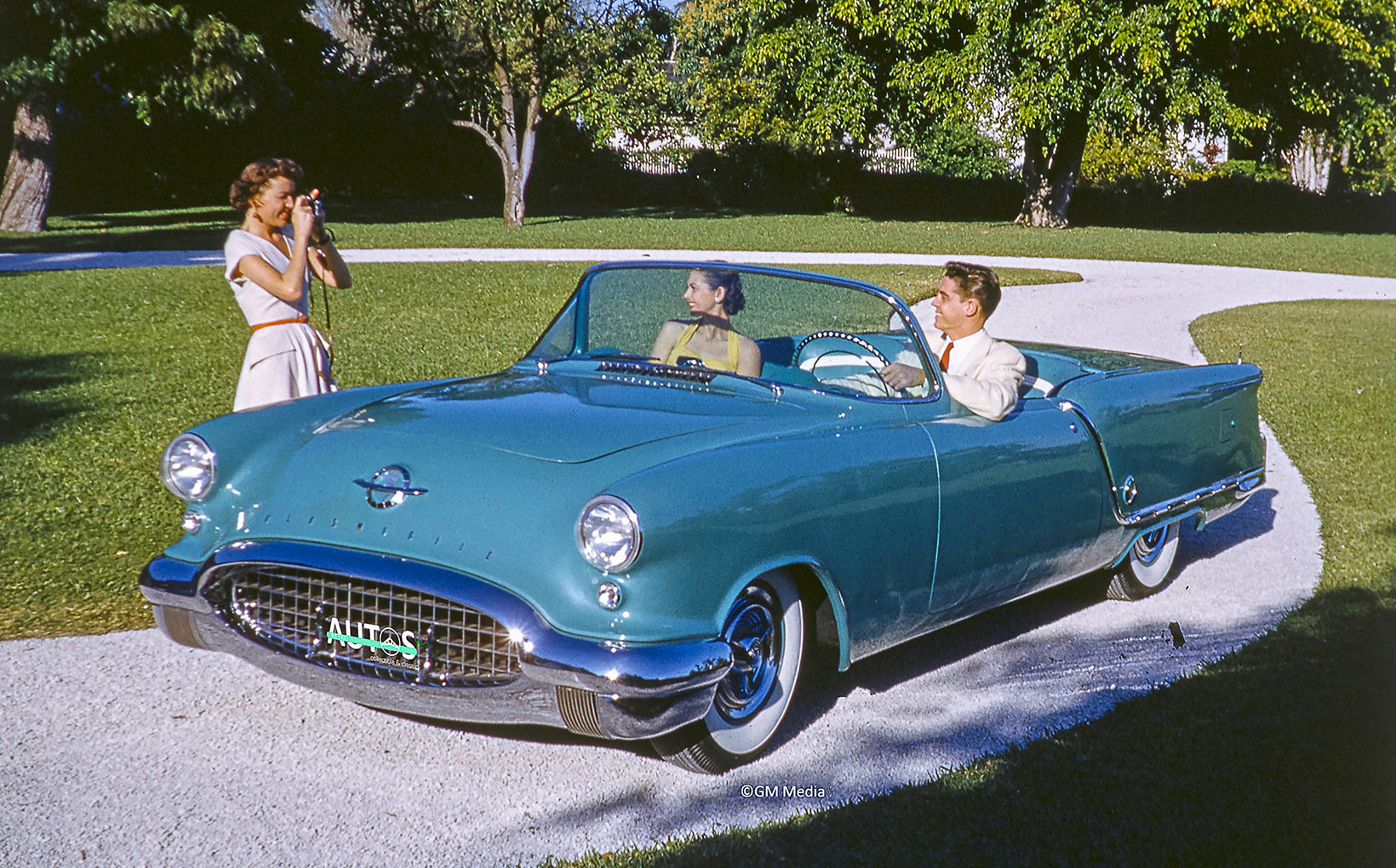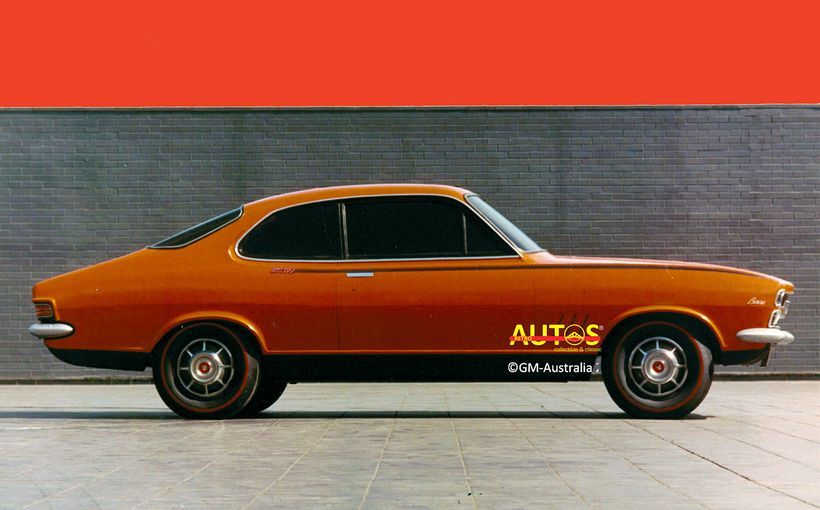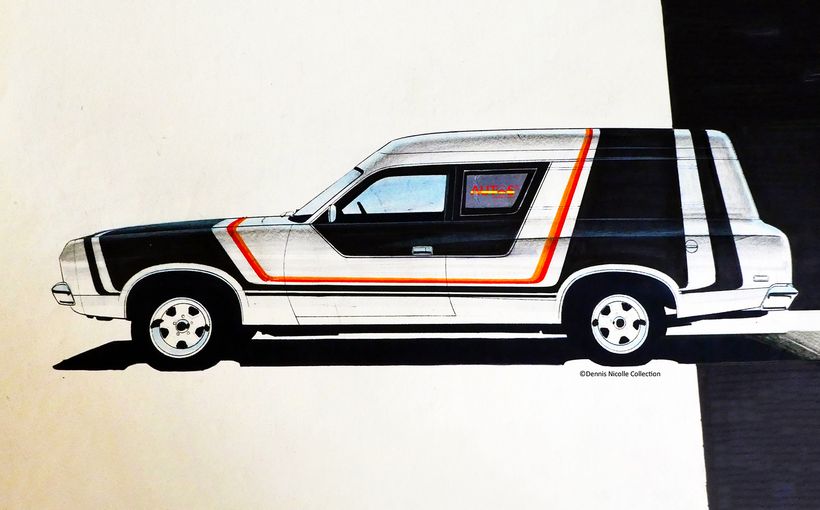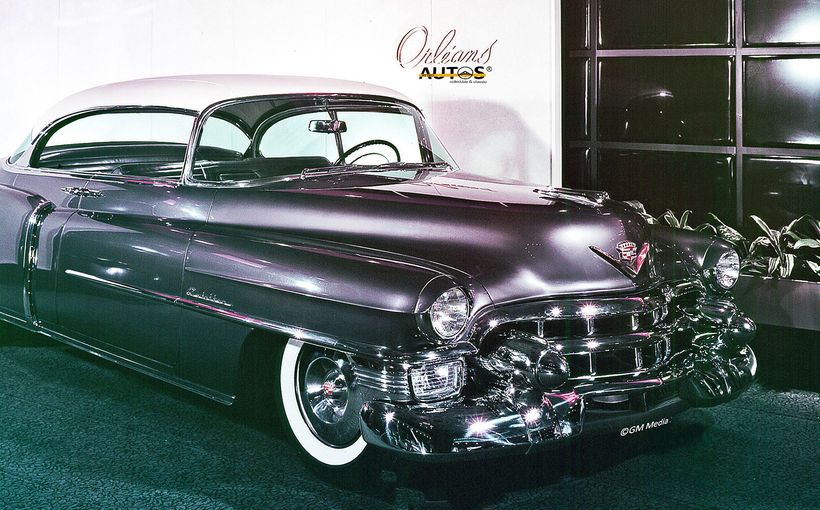
Let’s go back to January 1953, to the Waldorf Astoria in New York City, then the world’s most famous and luxurious hotel. In the Grand Ballroom is a wondrous display of General Motors’ (GM) new production cars and fabulous dream cars. For this is the 1953 Motorama.


The ’53 Motorama was one of eight similar events held between 1949 and 1961, and the first year the cavalcade of cars would venture beyond New York. The other cities on the six-month tour were Miami, Chicago, Los Angeles, San Francisco, Dallas and Kansas City.



The Motorama was championed by GM’s design supremo, the Hollywood born and raised, Harley Earl. He oversaw the creation of the show and the 80 semi-trailers and a couple of DC4 airplanes needed to move the Hollywood style spectacular across America.


For the GM Board, the Motorama was the perfect opportunity to entertain and influence presidents, royalty, politicians, suppliers, film and sports stars, media, industrial and financial power brokers, the rich and the famous. For the public it was a chance to glimpse the future, and buy it now.
Above all, the Motorama was GM’s soaring self-confidence made tangible and visible.
The stars of the show were the dream cars—Oldsmobile Starfire, Cadillac Le Mans and Orleans, Pontiac Parisienne, Buick Wildcat and Chevrolet Corvette. Teams of designers and engineers would spend 12-hour days competing to see who could style the “best of the best.”

Dream cars were not the only attraction. Three new limited-edition convertibles were unveiled: Cadillac Eldorado, Oldsmobile Fiesta and Buick Skylark. The well-known 1951 Le Sabre and Buick XP-300 concept cars were there too.


The Motorama was also the first time all of GM’s car, truck and other divisions, including Frigidaire, Allison, Fisher Body, Delco, GMC and Electro-Motive, displayed their products together under one roof. A press release breathlessly captured the extravagance of it all:
“GM cars will be seen with such decorative devices as ‘mobiles’, ‘space modulators’, a huge ‘flying wing’ and unique colour and lighting effects emphasizing the brilliance of the cars.
Entertainment includes a 24-piece orchestra, choral singing, ballet, and a ‘Fashion Firsts’ show in which models parade the latest trends in women's clothing styles.
The fashion show and the choral ballet are presented on a two-level, mechanized stage where GM's five car divisions also show their models. One by one, (cars) glide on to the stage. Each car is accompanied by models wearing dress creations fashioned by leading designers.”
It was all free to the public. In New York, 300,000 people visited between the 17th and 23rd January.



Cadillac Le Mans

The fibreglass bodied Le Mans sports/luxury roadster was a three-seater, with driver and passengers luxuriating on a leather upholstered bench seat. The rear bumper bar was integrated into the valance panel below the boot lid. Twin exhausts exited through the lower part of the rear fins, which were chromed.

Three additional fully operational Le Mans were built during 1953 so that they could be shown at multiple times across the USA and Canada.
The original dream car was sold to shoe store owner Harry Karl in late 1954. It passed through at least two more owners and eventually was destroyed in a fire in 1985.
The second was painted silver and changed to black in late 1953. The seat was recovered in yellow leather. This Le Mans was reportedly destroyed by GM in the late 1950s. Other reports say it went missing in 1953 after being displayed at a dealership in Oklahoma City.

The third Le Mans was painted yellow, with a black interior. After its auto show duties had finished it was bought by a dealership in Washington DC and then painted white. It still exists and is seen at car shows.
The fourth car now resides at the GM Heritage Centre. It was given a styling make over in 1958, gaining quad headlights and sharper tail fins.



Cadillac Orleans

The Orleans was GM’s first four door hardtop and like the Corvette, it was essentially a production car. Based on a 1952 Coupe de Ville body, the roof, cowl and front pillars were reconfigured to accommodate the wrapped windscreen. The coupe’s doors were shortened and rear hinged rear doors added. The body was painted in Damascus Steel Grey. The roof was covered in beige Naugahyde.
After its Motorama duties, the Orleans was used by GM’s President C.E Wilson. It was reportedly sold sometime in the 1950s. Supposed sightings of it persisted into the early 1960s.

The Orleans provided an early lesson about one of the Motorama’s downsides. It gave GM’s rivals a valuable insight into its design and product planning direction. Although GM introduced four door hardtops for Cadillac, Buick and Oldsmobile in 1955, ahead of everyone else, the competition fast-tracked development of their own pillarless four doors, launching them in 1956, at the same time as Pontiac and Chevrolet.

Pontiac Parisienne

The Parisienne was crafted from a production 1953 Pontiac Chieftain. The landau roof, long bonnet, short boot and hand lacquered black exterior paint evoked the super luxury, coach built, chauffer driven “town cars” of 1920s and 1930s such as Duesenberg, Hispano-Suiza and Pierce Arrow.

The body was sectioned, lowering the car by seven inches/180mm compared to a regular Pontiac. The cowl was reshaped to accommodate a wraparound windscreen. The bonnet was lower and flatter than standard.
Inside, the front seats were covered in Roulette Pink leather, as was the roof lining. The rear seats were draped in a nylon and aluminium thread fabric called Satin Frieze. The carpet was black.


The Parisienne survived its Motorama and subsequent auto show appearances. It left GM’s ownership in the late 1950s, passing through several owners, including dream car collector, Joe Bortz. It occasionally appears at classic car shows.

Buick Wildcat

The Wildcat, which also celebrated Buick’s 50th anniversary, was a three passenger sports/luxury convertible. Its body was made of fibreglass and the styling predicted Buick design themes for the next five years.
It is believed that up to four Wildcats were constructed. All had green leather interiors. One was originally painted black, but was quickly re-sprayed in white. Another’s rear wheel openings were radiused and the rear fenders re-shaped. Only one Wildcat survives.



Oldsmobile Starfire

If there is one of the ’53 dream cars that ought to have been given priority for production, even more than the Corvette, the Oldsmobile Starfire is that car. The four-passenger fibreglass bodied convertible was the Thunderbird that GM allowed to escape. It would not be until 1963, and the Buick Riviera, that GM finally caught up with Ford’s sporty luxury car.


The car was named after Lockheed’s Starfire jet fighter. Painted in Regal Turquoise and with styling by Art Ross, its design elements and name were applied to Oldsmobiles from 1954 onwards. The Starfire’s wraparound rear seat can be found on the 1958 Thunderbird. It’s another example of how GM gave away design ideas via the Motorama.
GM records indicate that three Starfires were constructed, with one being fully operable. None survive.


Chevrolet Corvette
The Corvette was the star of the ’53 Motorama. You can read the full story of its development in a recent Retroautos. There is a link at the end.

Eldorado, Skylark and Fiesta
This trio were basically hand built and more than twice the price of their respective division’s most expensive convertibles. That made them very exclusive. If you had one of these boulevardiers, you had money.
The Eldorado was President Dwight D Eisenhower’s official car for his inauguration day parade on 20th January 1953. Only 532 Eldorado’s were built for 1953. Dr John Wright has written about the Eldorado’s legacy. I’ve added a link at the end.

Buick’s Skylark, styled by Ned Nickels, did not have a “panoramic” windscreen but it had Buick's first OHV V8 engine. The body shape reflected customising themes, especially the cut down doors and windscreen. Only 1,690 were built.


The Oldsmobile Fiesta boasted unique paint colours and trim and, along with the Eldorado and Corvette, had bragging rights for the first productionised wraparound windscreen. Eisenhower used two as parade cars, when he visited his home town, Abilene, Texas, in October, 1953. Just 458 were sold.

Success?
GM considered the 1953 Motorama a huge success. In Kansas City, 200,000 saw the show. That was 25% of the city’s population. Across the USA more than 1,700,000 attended. A press release summed it all up:
"The entire venture was considered a new development in show business, blending an industrial exhibition with a spectacular theatrical theme.”
After their Motorama duties the dream cars were refreshed in Detroit and sent out onto the auto show and county fair circuit under the banner of the “Parade of Progress”. Dealers were also given dream cars for their showrooms.

Looking back at the dream cars of 1953, the thing that strikes me is how much they resemble production cars. Their shapes are not outrageous. Indeed, they might be considered a bit tame. But 1953 was only the beginning of what Harley Earl had envisioned.
The Motoramas of 1954, 1955 and 1956 grew bigger, more elaborate and more lavishly produced year by year. The dream cars became wilder. GM’s overseas divisions were “encouraged” to contribute. Holden supplied a pink FJ in 1955. (See my story link at the end.) Naturally, the costs rose exponentially.


After 1956 a halt was called for several reasons. GM realised the Motoramas were consuming considerable resources and management time. Television advertising was now a more cost-effective way of reaching buyers than extravagant theatrical-shows. Plus, why give competitors free access to new design ideas? Chrysler had just released their fabulous 1957 range, with low, low profiles and sky-scraping rear fins. GM had lost its styling leadership and needed to focus all its resources to catch up. A Motorama was an unneeded distraction.
GM gave the Motorama two last tries in 1959 and 1961, but with Harley Earl having retired they were much smaller in scale and focused on production cars. An era had ended. And you will never see anything like it again.


Retroautos® is published with passion and with pride by David Burrell. Special thanks to John Kyros at GM Heritage for researching the images and other material. Retroautos® stories and images are copyrighted. Reproducing them in any format is prohibited. Retroautos® is a registered trademark. Reproducing it in any format is prohibited.
LINKS
1955 Motorama: how the dream cars were styled








